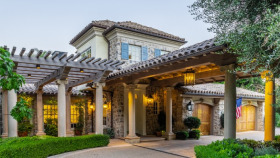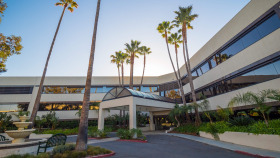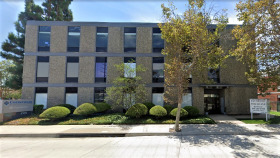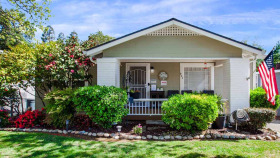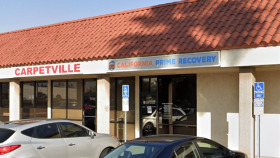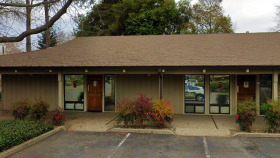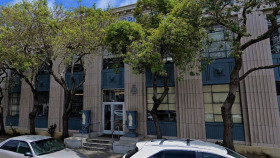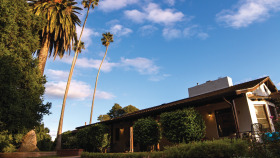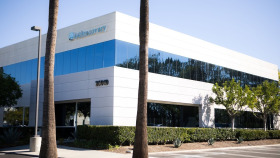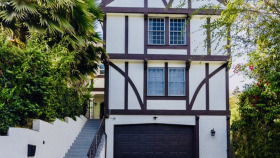Expert Insights
The coronavirus pandemic took an enormous toll on Californians, especially those addicted to drugs. We still don’t understand the true depth of the pandemic’s effects in many areas, but here are two things we know for sure: fewer people sought addiction treatment during the pandemic, and the number of relapses skyrocketed among people who were already in outpatient treatment. The pandemic put their lives in danger on multiple fronts. I heard it called the “collision of epidemics,” and that is something that stuck with me.
~ Natalie Baker
How Much Does Drug Rehab Cost in California?
California is ranked 23rd nationwide in terms of addiction treatment affordability, with an average cost of drug rehab of $56,654.
- Medical detox is the most expensive, with an average cost of $139,673
- Inpatient rehab in California costs an average of $49,994
- Outpatient rehab in California costs and average of $8,307
- Outpatient methadone treatment is the most affordable, with an average cost of $7,381
Keep in mind these costs are averages for all types of addiction treatment, including medically supervised detox and residential inpatient rehab, both of which drive up the averages. These numbers also reflect the full cost of drug rehab without any insurance coverage. Most patients can expect to pay far less than these average for more typical outpatient treatment, MAT, and therapy.
Cost of Drug Rehab in California Compared to Nearby States
Here is how much addiction treatment costs in California vs nearby states like Oregon, Nevada, and Arizona.
The cost of alcohol and drug rehab in California can depend on various factors, including:
- Treatment setting (inpatient vs. outpatient)
- Location of treatment center
- Funding
- Insurance
- Amenities and features
- Time in treatment (30 to 90 days or longer)
Typically, inpatient rehab or residential rehab costs more than outpatient services because you pay to reside at the facility. Drug rehab programs that are classified as “executive” or “luxury treatment center” are costlier to patients.
However, treatment costs should not prevent your access to care. California offers several free and low-cost rehab treatment options that provide sliding-scale fees based on your current financial standing. If you have health insurance, whether it is private or public, several facilities will accept your insurance and provide at least partial coverage, depending on your provider or plan.
California adults who previously avoided rehabilitation care due to cost decreased 28% from 11.9% to 8.6% between 2019 and 2020.2
How to Pay for Drug Rehab in California
As of 2024, there were over 2700 drug rehab facilities across the state of California. These facilities accept several payment methods. Of those treatment facilities, the following numbers reflect how many accept their respective payment methods:
Free Rehabs in California
There are many options for low-cost or free addiction rehab in California. If you’re seeking alcohol or drug rehab and have limited resources, there are facilities that accept Medicaid, state funding, or federal block grant funding as payment options. Many centers also offer a sliding scale fee structure.
You can sometimes access funding through nonprofit organizations, faith-based groups, and groups serving special populations and underserved individuals, such as LGBTQ and other advocacy groups, military and veteran’s organizations, and tribal or indigenous populations groups. The section below provides suggestions for finding such funding. When you’re considering low-cost or free substance abuse rehab options, look for facilities that feature evidenced-based treatments as well as affordability.
Major Private Insurance Carriers in California:
- Aetna Healthcare
- Anthem Blue Cross
- Anthem Blue Cross Californiacare
- Blue Shield of California
- Chinese Community Health Plan (CCHP)
- Cigna
- Gold Coast Health Plan
- Health Net of California, Inc.
- Inland Empire Health Plan
- Kaiser Permanente
- L.A. Care Health Plan
- Molina Healthcare of California
- Oscar Health
- Sharp Health Plan
- Sutter Health
- UnitedHealthcare
- Valley Health Plan
- Western Health Advantage
Medicaid / MediCal
Medi-Cal is the Medicaid-approved healthcare program in California. Medi-Cal offers addiction and substance abuse treatment through a state-certified program called Drug Medi-Cal. Most California counties participate in this program and use the Drug Medi-Cal Organization Delivery System (DMC-ODS). Substance abuse services offered through this program include detox, medication assisted treatment (MAT), crisis care, drug rehab, and aftercare services.
Rehab facilities offer a variety of options, including inpatient and residential treatment, outpatient (intensive outpatient and regular outpatient), 12 Step and faith-based programs, gender-specific programs, Spanish-speaking programs, LGBTQ+ programs, and programs for pregnant women. You would need to check with your insurance provider to determine which options are available to you.
Medicare and Medicare Advantage
Medicare and Medicare Advantage plans in California cover mental health and substance abuse treatment, such as detox, MAT, inpatient/residential care, outpatient treatment (partial hospitalization programs [PHPs], intensive outpatient programs [IOPs], and regular outpatient visits), individual, group, and family counseling, psychiatric evaluations, diagnostic testing, and medication management.
Options vary according to specific policies, so you should always check with your provider to confirm your coverage. Many policies will have limits to the number of inpatient days they pay for, as well as other restrictions. Deductibles and copays may be required.
Military Insurance
Insurances that are available to current military and military veterans include TRICARE insurance and Department of Veterans Affairs (VA) benefits. TRICARE covers medically-necessary substance abuse treatment, including residential/inpatient care, opioid treatment programs with detox and MAT, and outpatient treatment: PHPs, IOPs, and regular outpatient visits. Policies vary in the types of treatment services offered. There are limits on certain services, and not all services are offered at every facility.
VA addiction treatment benefits for military veterans in California are offered through the VA’s Substance Use Disorder (SUD) program. This program covers inpatient, outpatient, and opioid treatment services. Services vary according to the VA facility accessed. You can find a list of California VA clinics that have SUD programs online.
Tribal and Indigenous Peoples’ Programs
Indian Health Services (IHS)
California Area Indian Health Service works with the national Indian Health Services (IHS) to provide evidence-based and culturally appropriate substance abuse services to members of American Indian and Alaska Native tribes living in California. They offer services including mental health assessments, residential/inpatient care, outpatient treatment with individual, group, and family counseling, 12 Step group facilitation, and skills and vocational training. Transitional housing is available in some areas. Services vary according to location and the tribal programs available. You may need to provide a tribal enrollment card to access services. A list of residential substance abuse treatment programs is available on the state’s webpage.
Outpatient treatment is offered at IHS California clinics. A list of California health programs and clinics is also available on the state’s webpage.
Tribal MAT (Medication assisted Treatment) Program
The Tribal MAT program provides FDA-approved medications and detox services to tribal Indian communities in California. It also provides cultural activities and addiction counseling They’re funded by a State Opioid Response (SOR) grant, and have partnerships with other California organizations, including the California Indian Opioid Safety Coalition.
Other Low-Cost Options
Financial Assistance
You might be able to finance drug rehab by acquiring a loan, such as a bank loan, or a loan from a family member or friend. Or, you might also try to raise funds through a social media platform such as GoFundMe. Finally, if you’re a member of a group that often faces discrimination (e.g., LGBTQ+, racial, or cultural minorities), an advocacy group dedicated to your population may offer scholarships or other financial assistance to help you pay for treatment.
Sliding Scale Payments
Many rehab facilities offer lowered payments for individuals who would otherwise have trouble paying for treatment at the facility, regardless of whether they have insurance coverage. These fee reductions are often based on the income of the individual. If your income is below the federal poverty level, you might qualify to receive the maximum fee reduction offered by the facility. Since drug rehab costs vary greatly, depending on the type of facility (e.g., luxury vs. state-funded), the sliding fee scale discount would reduce the cost of treatment, but it would not necessarily make specific addiction treatment centers affordable to you.
Family Medical Leave Act (FMLA)
This 1993 law helps employees maintain job security while accessing mental health care, including receiving addiction treatment. FMLA allows you to take up to 12 weeks of unpaid leave within a 12-month period, without losing your job. Your employer must also maintain your health insurance coverage during this period.
Substance Abuse and Mental Health Services Administration (SAMHSA) Block Grants
The Substance Abuse and Mental Health Services Administration is an agency within the U.S. Department of Health and Human Services. They distribute funds in the form of grants to all 50 states. These funds are used by local government and non-governmental organizations to assist community mental health centers in providing services, including crisis mental health services, outpatient treatment, and inpatient/residential addiction treatment programs. Ask about the availability of SAMHSA grants at the rehab facilities you are considering.
Other Addiction Treatment Resources in California
Young People in Recovery (YPR)
This national nonprofit has 14 chapters throughout California. Community chapters provide services including 12 Step and faith-based programs, MAT, harm reduction resources, and life skills training. YPR also offers peer recovery support for both youth and young adults who are seeking to recover from addiction or substance abuse. Their site features a list for local California YRP chapters.
Parents and Addicts in Need (PAIN)
This California nonprofit provides substance abuse treatment services and emotional support to individuals with substance use disorder, as well as recovery housing and free naloxone. In addition, they offer school-based prevention programs for students in Fresno.
National Alliance on Mental Illness (NAMI) California
NAMI California is a nonprofit organization made up of families, caregivers, and individuals who have been affected by mental illness, whether it be themselves or someone they care about who has a mental illness. NAMI California provides education and support, plus community outreach to raise awareness about mental health. They advocate for the mentally ill, help them manage symptoms, and assist them in navigating the mental health system. You can find a local California NAMI meeting on their website.
United Way: California 211
United Way’s California 211 is a free, confidential, 24-hour phone hotline for California residents. Call center personnel can provide information on accessing mental health and substance abuse counseling, plus accessing food, housing support, transportation, and other resources, such as utility bill assistance or job finding assistance. Callers are referred to local resources.
The Purpose of Recovery
This nonprofit organization, located in Orange County, helps people who have drug addictions, and supports their families. They provide peer coaching, community outreach, and advocacy, offering group meetings, workshops, and mentoring. They are members of the Addiction Recovery Communities of California (ARCC) association and are collaborators with the Partnership to End Addiction.
The Phoenix
This charity nonprofit approaches addiction treatment and recovery through the use of physical fitness and community support. They have several locations in California, including Los Angeles, San Francisco, and San Diego. The Phoenix sponsors events, offers classes, and provides a supportive, inclusive environment for recovering individuals to meet and make friends. They welcome individuals with all levels of fitness to join them.
CarePossible
CarePossible is a Southern California nonprofit organization that helps veterans and military families, as well as low-income families, access free mental health and substance use addiction treatment. CarePossible produces community events and accepts donations and grants to aid in their work. They pay for treatment and offer scholarships to the populations they serve.
California Drug Use Statistics
About 18% of adults in California admitted to alcohol abuse, including binge drinking or heavy drinking within the past month. What’s more, there are more alcohol-related deaths in California than anywhere else in the U.S.
To put those numbers in perspective, the Centers for Disease Control and Prevention (CDC) estimates that Californians forfeited a total of 308,831 years of potential life, thanks to alcohol abuse.1 However, underage drinking is very low in the state.
Let’s look at the demographics related to alcohol abuse in California:1

20% of white (non-Hispanic) adults make up CA’s highest excessive drinking rates
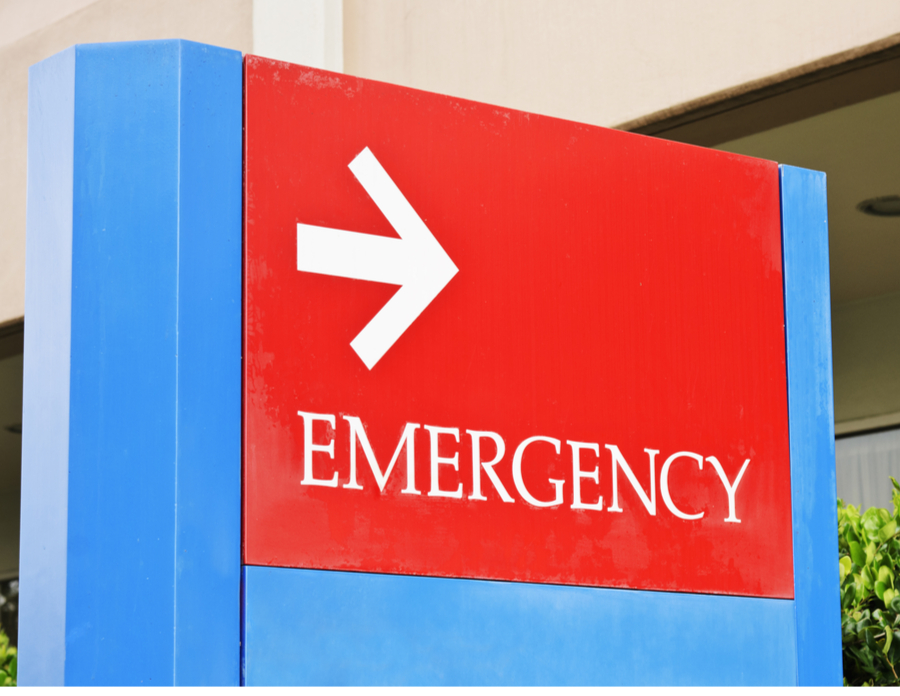
15,443 deaths in California are attributed to alcohol abuse every year

Californians lost 376,899 years of potential life as a result of alcohol abuse or alcoholism

Alcohol abuse cost CA taxpayers $35 billion in 2010 (equal to $47 billion in 2022)
- 21.9% of men are excessive drinkers
- 14.2% of women are excessive drinkers
- 3% of alcohol-related fatalities are age 35 and older
- 3.3% of alcohol-related fatalities are under the age of 21
In 2021, about 12.7% of adults reported abusing prescription drugs—including pain relievers, stimulants, and sedatives—or illicit drugs, excluding cannabis. That’s 0.7% above the national average.2
Here are a few more statistics related to drug abuse among CA adults:2

314,000 CA teens (age 12-17) report using drugs in the last month.

9% of all the nation’s drug overdose deaths occur in California.
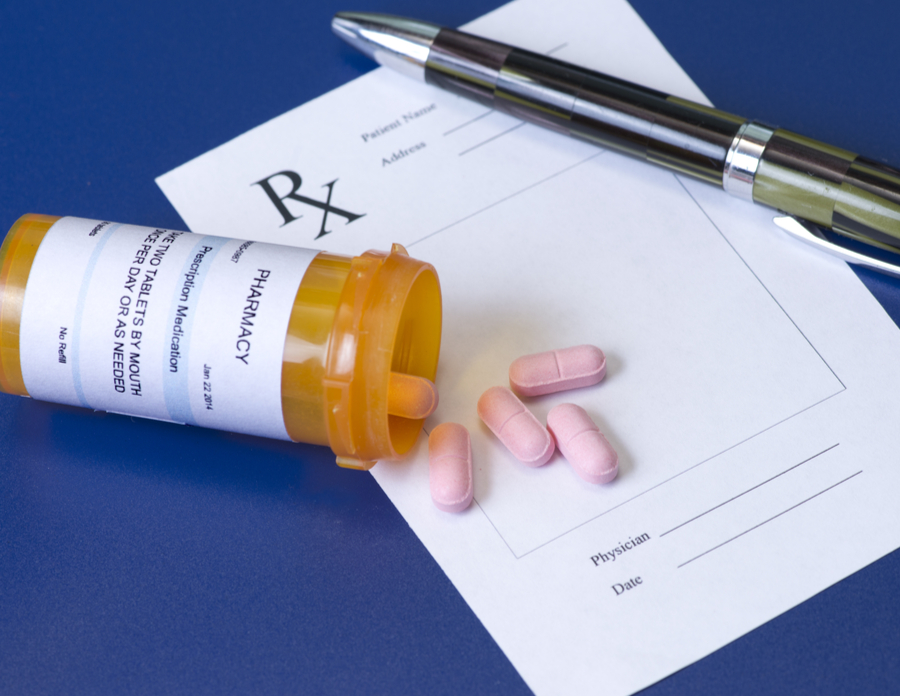
CA doctors write enough prescription opioids for 46% of residents to have one.

129,153 cases of HIV/AIDS in CA are caused by intravenous drug use.
California Addiction Treatment Center Admissions
In 2019, roughly 146,000 people aged 12 and over were admitted to treatment centers in California.3 About 33,000 of those admissions required treatment for alcohol addiction, while the remaining admissions required treatment for drug addiction.3
Here’s a breakdown of California rehab admissions in 2019:3
15,000 CA admissions were for marijuana and/or hash-related abuse
47,000 CA admissions were for methamphetamine or amphetamine abuse
42,000+ CA admissions were for opioid abuse (including heroin and other)
Drug Laws in California
California Good Samaritan Overdose Prevention Law
The Good Samaritan law, implemented in California in 2013, protects from arrest people who assist another person in a drug-related medical emergency or overdose. It reduces the potential concerns of helpers that their own use of drugs or possession of drug paraphernalia may cause them to face charges. The law’s intent is to encourage bystanders to call 911 without hesitation in emergency situations involving drug use. It does not affect laws regarding the selling of drugs.
The Substance Abuse and Crime Prevention Act (Proposition 36)
This California law, passed in 2000, allows non-violent drug offenders charged with the use or possession of illegal drugs to serve their sentence in a drug treatment facility rather than in jail. Attending drug rehab would be considered probation. Exceptions include individuals who refuse to go to treatment, those who are under the influence of drugs while using a firearm, and those who are repeat offenders or have past felonies. Drug treatment sentencing could consist of up to a year of treatment in an inpatient or outpatient facility, and up to 6 months of aftercare.
Adult Use of Marijuana Act
Under this California marijuana law, enacted in 2016, adults (ages 21 and older) may legally possess and consume marijuana (cannabis) in amounts up to 28.5 grams (one ounce) for personal use. It may be consumed in a private residence or in an establishment that is licensed for marijuana consumption. This law resulted in the lifting of many past criminal sanctions for marijuana use. State licenses allowing businesses to legally produce and sell marijuana for recreational use were enacted in January 2018. Restrictions include the limit of 10 milligrams of THC per serving of edible cannabis products. Landlords also reserve the right to prohibit renters from possessing cannabis on their property.
California Employee Protections for Drug or Alcohol Rehab
California Labor Code Section 1025-1028 states that employers with 25 or more employees must provide accommodations to employees who are voluntarily attending drug rehab. Accommodations may include unpaid time off, or the use of sick leave or vacation time. Employees who wish to attend addiction treatment may also be able to use the Family and Medical Leave Act (FMLA) or the California Family Rights Act (CFRA) to help them accommodate their off-work needs.
California Government Prevention and Care Services
California Senate Bill 110 includes contingency management (CM), a reward-based behavioral therapy drug treatment technique, as a benefit that is covered by Medi-Cal. For example, individuals in drug treatment who demonstrate substance-free behaviors, such as having clean urine tests, can be rewarded with vouchers or gift cards. CM is commonly used to treat addictions to methamphetamines and cocaine, and it is also used as a treatment for alcohol use disorder.
California Ethical Treatment for Persons with Substance Use Disorder Act
Senate Bill 349 was passed in April 2022 to protect individuals receiving drug addiction treatment and their families. This bill states that individuals and their families must be treated with dignity, honesty, and respect during treatment. Substance use treatment providers were required to adopt a Client Bill of Rights for individuals in their care, and the Client Bill of Rights must be made available to all clients and prospective clients seen at the treatment facility.
Resources
- America’s Health Rankings analysis of CDC, Behavioral Risk Factor Surveillance System, United Health Foundation. (2021). Trend: Excessive Drinking, California, United States.
- America’s Health Rankings analysis of CDC, Behavioral Risk Factor Surveillance System, United Health Foundation. (2021). Trend: Non-Medical Drug Use, California, United States.
- Substance Abuse and Mental Health Services Administration, Center for Behavioral Health Statistics and Quality. (2019). Treatment Episode Data Set (TEDS): 2009-2019.
- National Survey of Substance Abuse Treatment Services, Substance Abuse and Mental Health Services Administration. (2019). Quick Statistics.
- U.S. National Library of Medicine. (2021). Dual diagnosis, MedlinePlus.
- Center for Substance Abuse Treatment. (2005). Substance Abuse Treatment for Adults in the Criminal Justice System. Treatment Improvement Protocol (TIP) Series 44. HHS Publication No. (SMA) 13-4056. Rockville, MD: Substance Abuse and Mental Health Services Administration.
- California Legislative Information. (2021). Bill Text.
- National Institute on Drug Abuse. (2018). Contingency Management Interventions/Motivational Incentives (Alcohol, Stimulants, Opioids, Marijuana, Nicotine).
- California Legislative Information. (2021). Bill Text.
- California Drug Policy Alliance. (2013). Understanding California’s 911 Good Samaritan Law.
- California Health Care Foundation. (2018). https://www.chcf.org/wp-content/uploads/2018/09/SubstanceUseDisorderAlmanac2018.pdf
- California Health Care Foundation. (2018). Substance Use in California: A Look at Addiction and Treatment. from https://www.chcf.org/wp-content/uploads/2018/09/SubstanceUseDisorderAlmanac2018.pdf
- 1 Overview, Essential Concepts, and Definitions in Detoxification. (2006, January 1). NCBI Bookshelf. https://www.ncbi.nlm.nih.gov/books/NBK64119/
- California VA Directory. https://www.va.gov/directory/guide/state_SUD.cfm?STATE=CA
- IHS Clinics in California. https://www.ihs.gov/california/index.cfm/health-programs/adult-substance-use-disorder/
- Young People in Recovery. https://chapters.youngpeopleinrecovery.org/
- Find a California NAMI meeting. https://namica.org/get-help/











